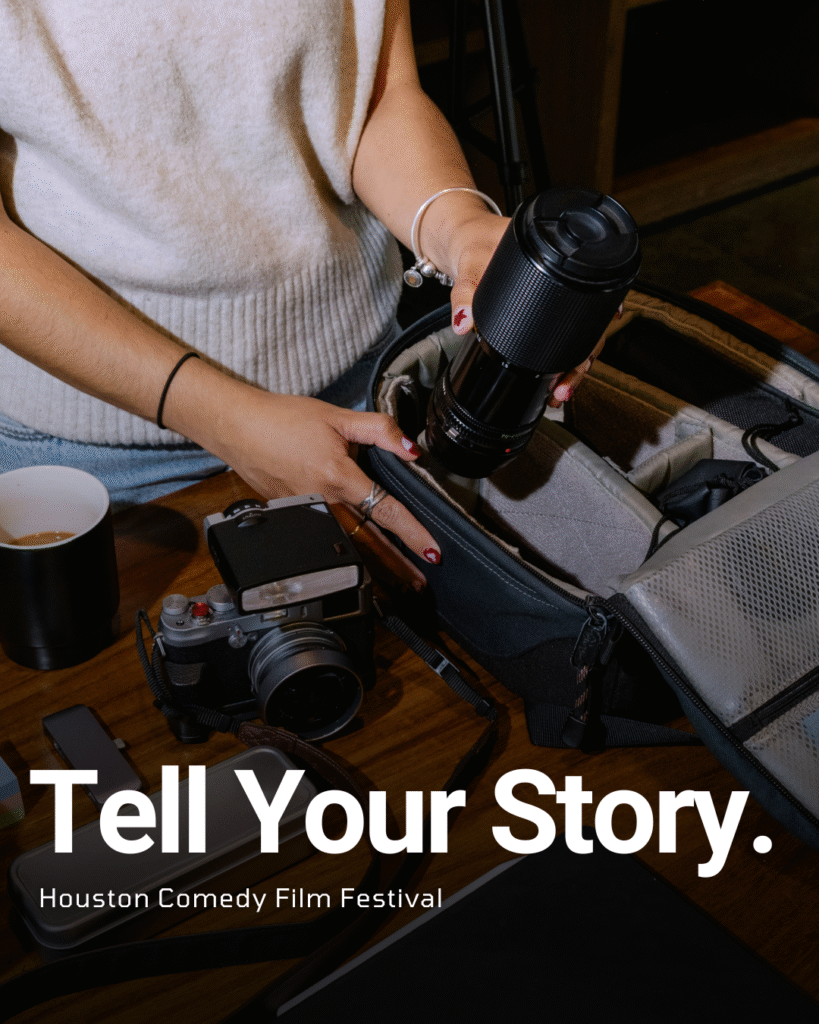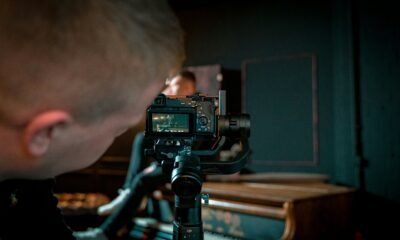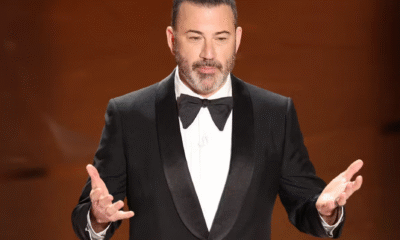Entertainment
Kourtney Kardashian Can’t Stand Tristan Thompson, And He’s Creeping Out … on November 3, 2023 at 9:19 pm The Hollywood Gossip
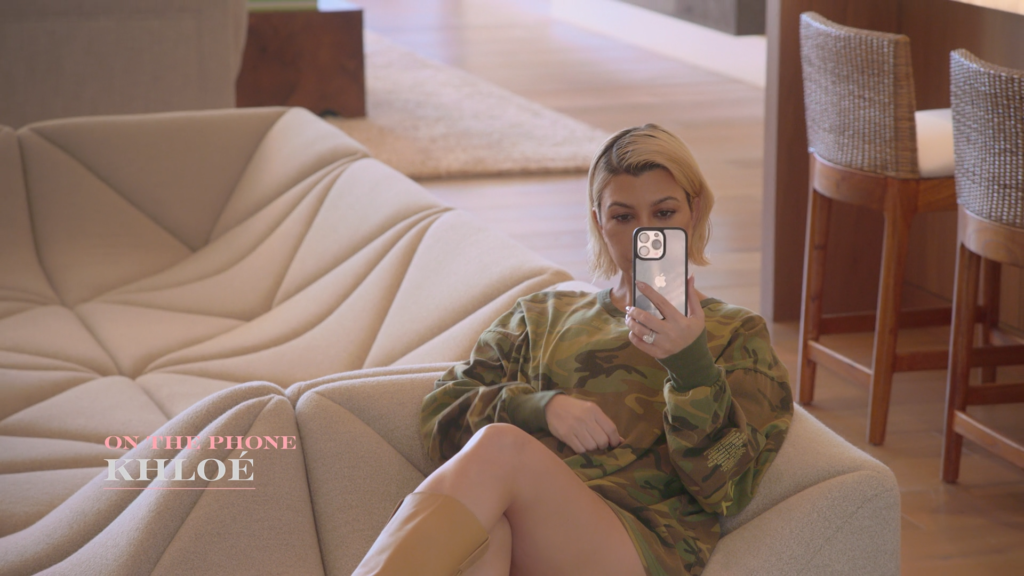
The Kardashians viewers have already heard about Kris Jenner’s greatest regret.
But she’s not the only — or the most egregious — cheater in the family.
That title belongs to the reigning champion, Tristan Thompson. His betrayals of Khloe went well beyond ordinary cheating.
Kourtney cannot stand to be in the room with the man who put her sister through hell. And neither can her daughter, Penelope.
With sister Khloe Kardashian on the phone, Kourtney Kardashian lounges on a large piece of modular furniture to discuss the day’s plans. (Image Credit: Hulu)
On this week’s episode of The Kardashians, Khloe Kardashian called her eldest sister, Kourtney.
Kourt lounged on the most eye-catching (yet with its practicality undetermined) piece of modular furniture, the size of some small living rooms.
When Khloe mentioned that she and niece Dream Kardashian would be stopping by, she mentioned that Tristan was with them, too.
From off camera, Penelope Disick assures her mother that she’s okay with today’s plans. (Image Credit: Hulu)
Kourtney then asked her daughter, Penelope, if she would still feel up for going out with family if Tristan was there.
From off-camera, Penelope replied: “Yeah, I’m fine.” She’s a very easy-going child, clearly.
Penelope is currently 11 years old. She would have been 10 (but just a few months shy of 11) when this episode filmed.
Seated on this elaborate piece of modular furniture, Kourtney Kardashian discusses her feelings about a certain member of the extended family. (Image Credit: Hulu)
Having broached the awkward topic of Tristan, this left Kourtney alone in this colossal space to explain the situation to producers.
At first, she began to say that she doesn’t “know why” she, personally, reacts in sucha strong, negative way to Tristan.
But she does. And production reminded her of that.
When Kourtney Kardashian claims that she doesn’t “know why” she reacts this way, a producer reminds her that she does, in fact, know. (Image Credit: Hulu)
“I feel like she gets it from me,” Kourt said of Penelope’s discomfort around Tristan. “I told her the first day of school, I was so triggered by him.”
Just a head’s up — Kourtney says “triggered” a bunch of times. It’s unclear if she is using the term accurately, to refer to something like trauma or OCD or something like that. She might simply be using the word to say “mad” or “upset.” (Helpfully, those are already words that exist, so you don’t need to misuse “triggered”)
“I feel like we all brush it off and are fine,” she admitted. “And then I was just so triggered and I was like, ‘I just can’t do it anymore.’”
Kourtney Kardashian speaks to the confessional camera on The Kardashians while wearing an asymmetrical black outfit. (Image Credit: Hulu)
“Tristan has made horrible decisions and choices with my sister,” Kourtney then royally understated.
“There’s times when I’m so triggered by him I can’t be around him,” she said.
“And then there’s times when I just let it go because we just want harmony,” Kourt explained. She continued: And, you know, he’s the father of my niece and nephew.”
Kourtney Kardashian receives a very awkward hug from Tristan Thompson after he and Khloe Kardashian arrive. Penelope Disick is not a big fan of him, either. (Image Credit: Hulu)
Sure enough, Kourtney and Dream Kardashian arrived. Tristan was there, too, looking incredibly shirtless as he towered over everyone.
He walked over and gave Kourtney a side hug. She grudgingly accepted it, but did her best to keep him from mashing her face into his tattooed tiddy.
Viewers recoiled in discomfort from the display. Kourt and Penelope quickly busied themselves ignoring Tristan as much as possible.
Kourtney Kardashian does her level best to tune out Tristan Thompson (and Penelope Disick does the same beside her) while speaking to Dream Kardashian. (Image Credit: Hulu)
However, Kourtney did end up graciously offering Tristan a tour of this sprawling house.
Noting that it was Good Friday and perhaps feeling that her personal religious beliefs prompt her to give people more leniency than they deserve, she acked as if everything were fine.
Couldn’t be me. Not after, at this point, five whole years since Tristan’s first (but not last) cheating scandal.
Walking past what appears to be some sort of rich people snack bar complete with multiple ovens, the much taller Tristan Thompson trails behind Kourtney Kardashian. With her oversized shirt and bare legs and his shirtless torso and big shorts, they have exactly one outfit between them. (Image Credit: Hulu)
Significantly, Khloe doesn’t object to Kourtney giving Tristan the cold shoulder.
If anything, she feels even more strongly in favor of Penelope’s resentment.
(At least, that’s what she says in the confessional, and who am I to argue with a woman whose hair looks that good?)
Speaking to the confessional camera, Khloe Kardashian affirms that she doesn’t expect everyone to share her feelings about her serial cheating ex. (Image Credit: Hulu)
Khloe emphatically says that she is in a good place with Tristan.
No, they’re not together. We all hope that this remains true for the rest of their lives.
But they get along as co-parents, as friends, and as neighbors. It’s awkward, but better than being enemies.
Khloe Kardashian and Penelope Disick enjoy a massive, opulent space. (Image Credit: Hulu)
But Khloe stressed that she does not expect other members of her family to share her feelings about Tristan.
Or to get along as well with him as she does.
That doesn’t seem to have always been the case. After all, Khloe has leaned heavily upon their family’s infamous solidarity over the past several years. But now? She’s cool with it.
Looking gorgeous while giving her confessional statement, Khloe Kardashian says that she’s happy that her niece has such a strong sense of moral clarity. (Image Credit: Hulu)
In fact, Khloe added that she finds it encouraging that Penelope, at only 10 years old, had such a strong sense of right and wrong.
There are families that force kids to spend time around toxic relatives whom they despise. This is unhealthy (and sometimes dangerous). It’s good that Kourtney gave her a choice.
Penelope and Kourt are right. Tristan sucks. He’s not evil, but his behavior is not that of a good dude.
Kourtney Kardashian Can’t Stand Tristan Thompson, And He’s Creeping Out … was originally published on The Hollywood Gossip.
The Kardashians viewers have already heard about Kris Jenner’s greatest regret. But she’s not the only — or the most …
Kourtney Kardashian Can’t Stand Tristan Thompson, And He’s Creeping Out … was originally published on The Hollywood Gossip.
The Hollywood Gossip Read More
Entertainment
California Bans AI Clones from Replacing Real Talent

California just made a dramatic stand for human creativity, defeating the threat of AI actor clones with a sweeping new law that puts people—not algorithms—back in the Hollywood spotlight. With the stroke of Governor Gavin Newsom’s pen in October 2025, the state has sent a clear message to studios, tech companies, and the world: entertainment’s heart belongs to those who create and perform, not to digital facsimiles.
California Draws a Hard Line: No More AI Clones
For months, the entertainment industry has been divided over the use of artificial intelligence in filmmaking. Studios, lured by promises of cost-cutting and creative flexibility, have invested in software that can mimic an actor’s face, voice, and even emotional range. But for performers, this wave of synthetic reproduction has triggered alarm—encouraged by chilling stories of deepfakes, unauthorized digital doubles, and contracts that let studios reuse a star’s likeness indefinitely, sometimes without pay or approval.
The new California law, anchored by AB 2602 and AB 1836, changes everything:
- Every contract must explicitly detail how studios can use digital replicas or voice models, preventing once-common “blank check” agreements that overlooked this risk.
- No one—not studios nor streaming giants—can create or release AI-generated clones of an actor, living or dead, without clear, written consent from the performer or their estate.
- The law gives families new powers to defend loved ones from posthumous deepfake exploitation, closing painful loopholes that once let virtual versions of late icons appear in new ads, films, or games.
Actors Celebrate a Major Victory
The legislation rides the momentum of the recent SAG-AFTRA strike, where real-life talent demanded control over their own digital destinies. Leaders say these protections will empower artists to negotiate fair contracts and refuse participation in projects that cross ethical lines, restoring dignity and choice in an industry threatened by silent algorithms.
Stars, unions, and advocacy groups are hailing the law as the most robust defense yet against unwanted AI replications.
As one actor put it, “This isn’t just about money—it’s about identity, legacy, and respect for real artists in a synthetic age.”
A New Chapter for the Entertainment Industry
California’s move isn’t just a victory for local talent—it’s a warning shot to studios everywhere. Companies will now be forced to rethink production pipelines, consult legal counsel, and obtain proper clearance before digitally cloning anyone. Global entertainment platforms and tech developers will need to comply if they want to do business in the world’s entertainment capital.

These laws also set a template likely to ripple through other creative fields, from musicians whose voices can be synthesized to writers whose work could be mimicked by generative AI. For now, California performers finally have a powerful shield, ready to fight for the right to shape their own public image.
Conclusion: Human Talent Takes Center Stage
With its no-nonsense ban on AI actor clones, California draws a bold line, championing the work, likeness, and very humanity of its creative stars. It’s a landmark step that forces the entertainment industry to choose: respect real talent, or face real consequences. The age of the consentless digital double is over—human performers remain the true source of Hollywood magic.
Entertainment
Chaos and Comedy: Darby Kingman’s “Camp Wackapoo: Rise of Glog”
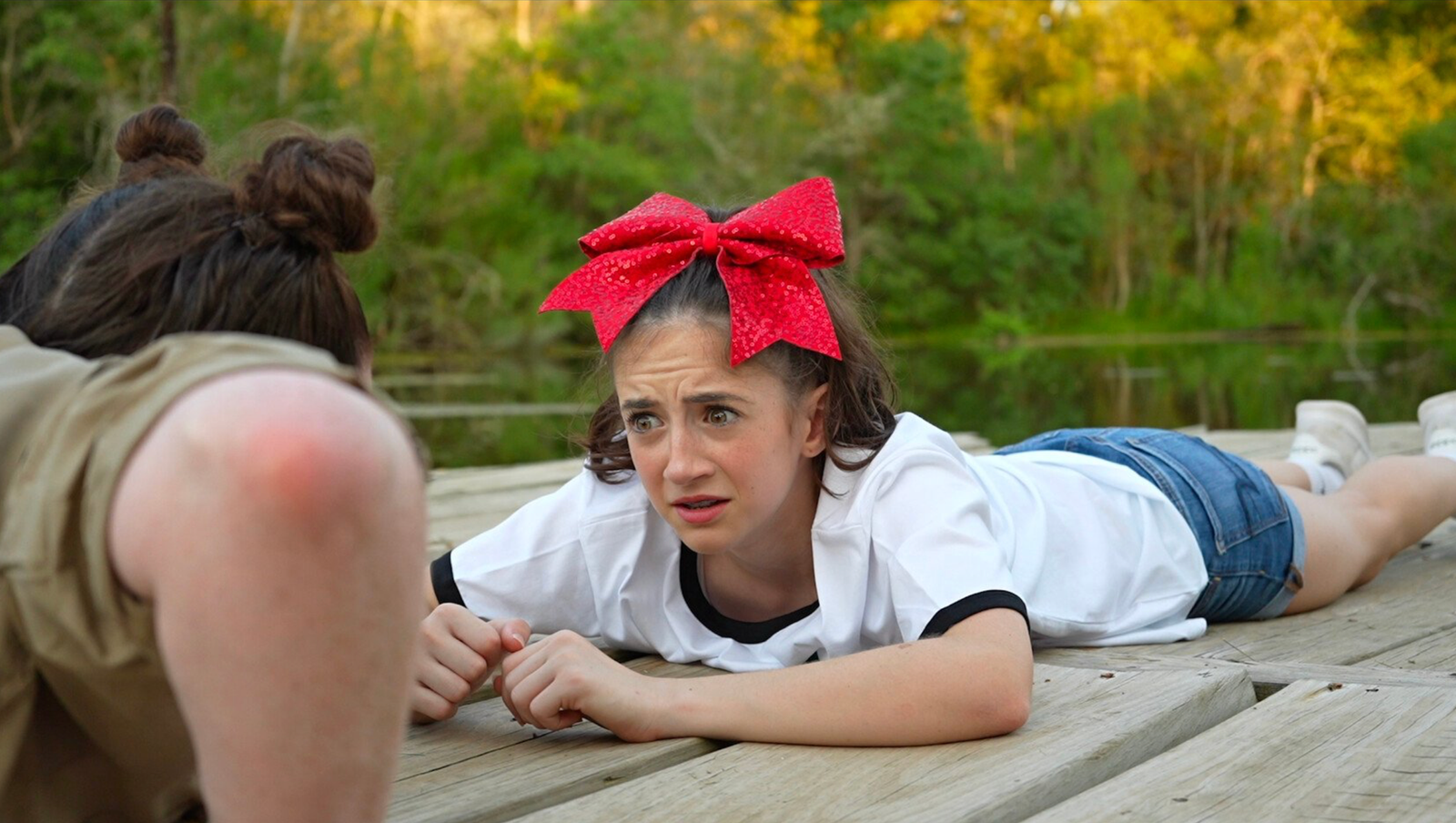
Darby Kingman’s “Camp Wackapoo: Rise of Glog” redefines summer camp comedy with a wild, energetic story about ambition, chaos, and the joy of embracing the unexpected. The film centers on a relentlessly competitive camp counselor who’s determined to finish first—only to face a motley crew of unruly campers and a summer unlike any other.
As Darby puts it, “Not everything is that deep. It really honestly was to make people laugh. She has all these kids that are not working with her and she’s just losing her mind. It’s crazy, silly, goofy, and it was a blast.”
What started as a simple scene for Darby’s acting reel evolved into a full-fledged film with encouragement from her mentor at Debbie Reynolds Acting School. Darby dove into every role—writing, directing, starring, and meticulously preparing each prop and costume. “Plan and prepare, but also be flexible and ready to be in the moment—that’s when the magic happens,” she advises.
Working with a handpicked cast of her own dance students, Darby built an atmosphere of real teamwork and camaraderie. She credits the “precious” energy of her young cast, her creative director of photography, and the overall spirit of her production team for turning the project into something bigger than herself. Her experience is an inspiring blueprint for indie filmmakers:
“Take initiative and control of your career. You can’t just sit around and wait for somebody to pick you. Figure out what you’re good at and go for it. Create something that brings joy to others.”
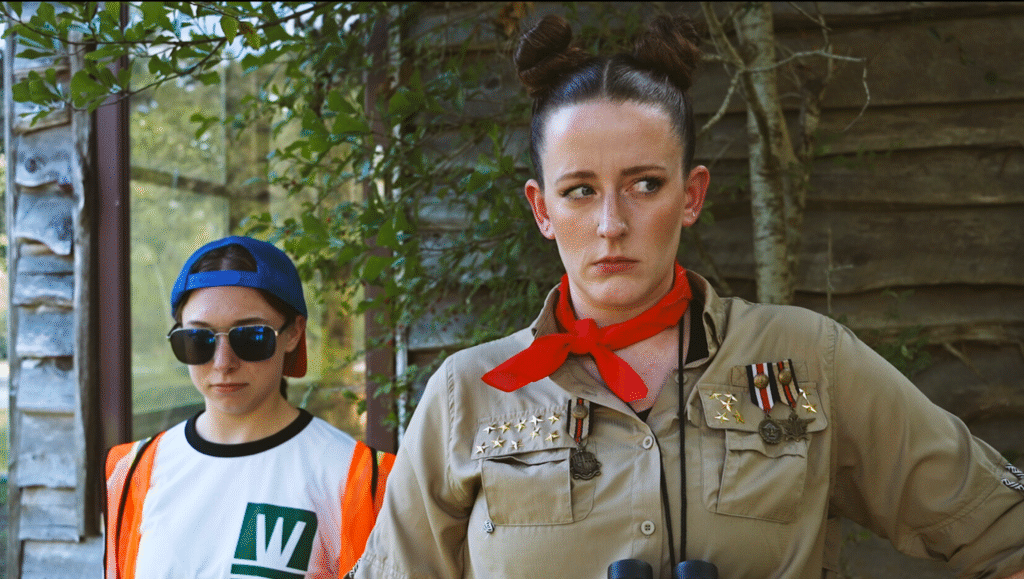
Her production motto? “Preparation is key, but you have to be ready to go with the flow—that’s when the magic happens.” Darby’s fearless creativity, focus on collaboration, and love for comedy shine throughout “Camp Wackapoo: Rise of Glog.” It’s more than just a camp satire—it’s a heartfelt testament to hard work, original humor, and leadership from the ground up: “People need to laugh right now. That’s a win.”
Catch “Camp Wackapoo: Rise of Glog” and experience Darby’s infectious energy and comic genius at the Deluxe Theatre on November 1, 2025. Get your tickets now at Houstoncomedyfilmfestival.com.
Entertainment
Diane Keaton Dies at 79
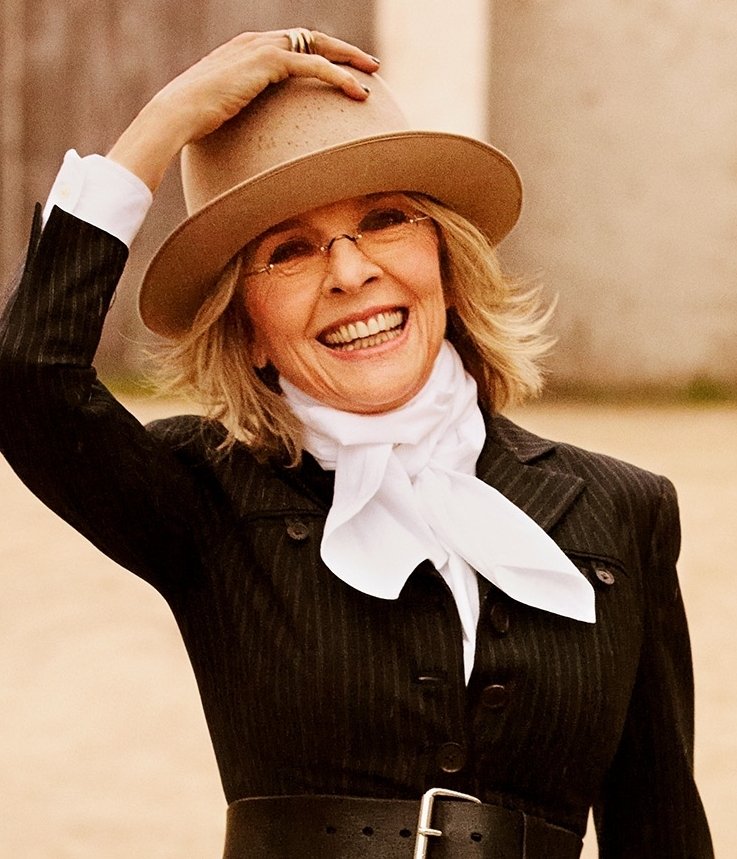
The world of film and entertainment is mourning the loss of Diane Keaton, an Oscar-winning actress renowned for her enduring talent, individuality, and influence on generations of performers and fans. Keaton died at the age of 79 in California on Saturday, October 11, 2025, her family confirmed. Details remain private, with her family requesting privacy as they grieve this profound loss.
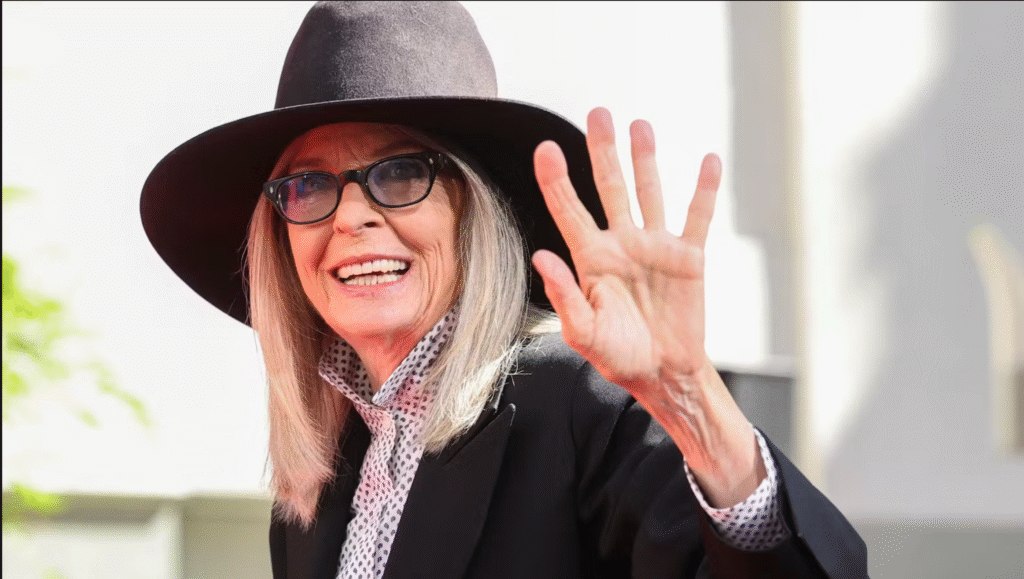
A Distinctive Talent
Diane Keaton rose to fame in the 1970s through a series of memorable roles, most notably as Kay Adams in “The Godfather” trilogy and as the quirky, unforgettable lead in Woody Allen’s “Annie Hall,” for which she won the Academy Award for Best Actress. Her performances in films like “The First Wives Club,” “Something’s Gotta Give,” and the “Book Club” series solidified her reputation as an actress with unique comedic timing and dramatic depth. Keaton was celebrated not only for her artistry but also for her androgynous fashion sense, characterized by menswear-inspired looks, hats, and an easy, effortless style that influenced generations.
Legacy and Tributes
Following the news of her passing, tributes poured in from Hollywood and beyond. Bette Midler, Goldie Hawn, and Jane Fonda were among the countless stars who expressed devastation and admiration for Keaton’s incomparable legacy. Hawn recalled their friendship and collaborations, writing: “Diane, we aren’t ready to lose you…you stole the hearts of the world and shared your genius with millions”. Midler echoed the sentiment, praising Keaton as “brilliant, beautiful, extraordinary” and a truly original presence in Hollywood.

Private Struggles and Final Months
Though fiercely independent and known for her openness, Keaton kept her declining health private in her final months. Friends and neighbors noticed her retreat from public life and social media, and she was recently seen less often in her Brentwood neighborhood. In the past, Keaton candidly discussed her ongoing battles with skin cancer and bulimia, openly advocating for personal health and authenticity.
Remembering Diane Keaton
Diane Keaton leaves behind a legacy defined by her fearless performances, unique style, and enduring influence on the arts. She is survived by her two children, Dexter and Duke. As Hollywood and her global fanbase mourn, her pioneering spirit and unmistakable voice will continue to inspire generations.

 Business3 weeks ago
Business3 weeks agoDisney Loses $3.87 Billion as Subscription Cancellations Surge After Kimmel Suspension

 Entertainment3 weeks ago
Entertainment3 weeks agoWhat the Deletion Frenzy Reveals in the David and Celeste Tragedy

 Filmmaking4 weeks ago
Filmmaking4 weeks agoThe Real Reasons Film Jobs Are Disappearing

 Entertainment4 weeks ago
Entertainment4 weeks agoABC Suspends ‘Jimmy Kimmel Live!’ Indefinitely After Kirk Remarks

 News4 weeks ago
News4 weeks agoSeeing Trauma: What Charlie Kirk’s Death Reveals About a Nation in Conflict

 Tech4 weeks ago
Tech4 weeks agoWhy Experts Say AI Could Manipulate, Blackmail, and Even Replace Human Relationships

 Entertainment3 weeks ago
Entertainment3 weeks agoExecutive Producer Debut: How Celia Carver Created Festival Hit ‘Afterparty’

 Filmmaking4 weeks ago
Filmmaking4 weeks agoWhy Hollywood’s Biggest Blockbusters Keep Failing at the Box Office





